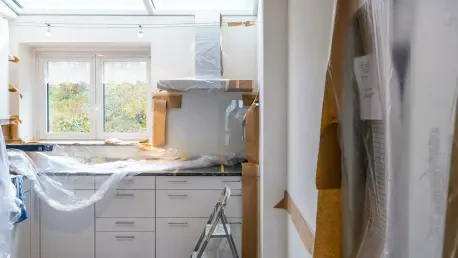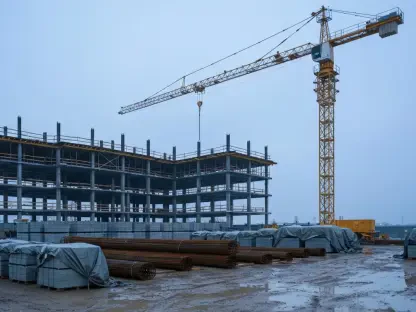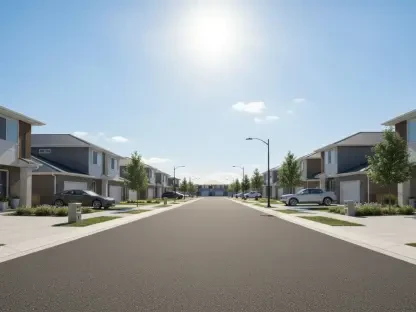Home renovation projects often begin with excitement and dreams of transforming living spaces into personal sanctuaries, yet they frequently result in unexpected financial strain due to unforeseen expenses. While homeowners typically start with well-considered budgets and meticulous plans, the reality of renovation can introduce challenges that are both emotionally and financially taxing. Designer insights and personal experiences reveal a common theme: anticipated costs often fall short of the reality. This disparity stems from various factors, including structural surprises, scope modifications, and material shortages, which can significantly inflate costs beyond initial estimates. Understanding this dynamic and preparing accordingly is crucial for any homeowner embarking on such endeavors.
Unanticipated Financial Challenges: A Recurring Theme
Renovation budgets are often based on quotes and estimates, but as projects unfold, unexpected issues frequently arise that can lead to substantial financial deficiencies. A common problem faced by renovators involves under-budgeted finishing touches, which can quickly become financially burdensome. Essential systems such as electrical, plumbing, and heating may reveal hidden complications that necessitate costly interventions. Dampness and mold, though often underestimated, pose another major financial hurdle, with potential remedies ranging from surface treatments to complex structural repairs, each carrying its own financial implications. The gap between envisioned and actual costs is further illustrated by the variability in quotes for exterior painting, decorating, and other seemingly routine tasks.
Delving Into Specific Areas Prone to Cost Overruns
Painting and decorating often emerge as contentious issues, with differing opinions on the merits of professional versus DIY approaches. For instance, exterior painting may come with quotes ranging from $20,000 to $100,000, vastly exceeding many homeowners’ initial budget allocations. Interior decor, too, sees significant variability in costs, reflecting the importance of thorough budgeting even for final, seemingly minor touches like paint and wallpaper. Moving beyond interior finishes, damp treatment is frequently highlighted as an underestimated concern, proving to be a significant financial strain. Homeowners might uncover mold behind walls or cabinets, necessitating extensive remediation work that can escalate from simple surface treatments to structural interventions like tanking and replastering, substantially raising expenses and prolonging timelines.
Outdoor Projects and Their Cost Surprises
External structures and landscaping constitute another area ripe with unexpected expenditures. For instance, hilly terrain may require garden reshaping, incurring higher costs for leveling and laying turf than initially anticipated. The example of cement steps and the pricing estimates for driveways and fences emphasize the need for realistic budgeting for outdoor projects, which often exceed early predictions. Waste removal is yet another unexpectedly high expense associated with renovations. The debris generated from projects can require hiring dumpsters for disposal, with costs that vary considerably by region. Employing multiple quotes becomes essential to effectively managing these expenses and avoiding unnecessary financial pressure.
Addressing the Hidden Costs of Customization
Bespoke tiling in entryways can become one of the areas where envisioned designs meet harsh economic realities. Homeowners often face staggering quotes for custom designs despite initial dreams, prompting DIY efforts to avoid prohibitive costs. However, such endeavors can lead to an investment of time and energy that must be weighed against potential savings. Similarly, replacing doors, particularly internal ones, poses another hidden expense for renovators. While they may seem less significant, these replacements can require professional installation, resulting in unexpectedly high costs that deviate from initial budget projections. Instances like these highlight the discrepancy between estimated and actual expenses, illustrating a common theme across renovation projects.
Reality Check: Accepting Inherent Unpredictability
Throughout the discussion, overarching trends reflect the unpredictability inherent in renovation projects, with budget overruns being almost inevitable. To navigate these uncertainties, homeowners are advised to anticipate spending 20 to 30 percent over initial budget forecasts. Additionally, maintaining a contingency fund is vital, particularly with older homes where unforeseen structural issues are more prevalent. Budget overruns and contingencies are recommended to accommodate unexpected discoveries behind walls or beneath floors. Prioritizing structural and systemic issues is emphasized, ensuring investments in foundational elements like wiring and plumbing reap benefits in the long term, resulting in safer and aesthetically pleasing homes.
Equipping for Success: Practical Strategies in Renovations
Renovators can adopt several practical strategies to mitigate financial risks associated with unexpected costs. The acquisition of second-hand materials, utilization of moisture meters, and other gadgets can prevent and address hidden issues early, aiding in maintaining control over budgets. Emphasizing essential elements over decorative touches can also safeguard financial resources, ensuring the structural integrity and functionality of the renovated space. Engaging in realistic planning and informed decision-making processes enables homeowners to harness a well-rounded perspective when embarking on renovation projects, readying them to tackle the expected and unexpected intricacies with adaptability and foresight.
Building Knowledge: Navigating the Renovation Landscape
External structures and landscaping often become a source of unforeseen expenses during home improvement projects. If your property features hilly terrain, you might need to reshape your garden, which can lead to unexpectedly high costs due to the need for leveling and laying turf. Such tasks often exceed original budget estimates and highlight the importance of realistic budgeting. Similarly, projects involving cement steps or the installation of driveways and fences can quickly surpass financial predictions, making it crucial to allocate funds wisely for outdoor work.
Another area where costs can balloon unexpectedly is waste removal. The debris produced during renovations can be considerable, often requiring the rental of dumpsters for effective disposal. Dumpster rental prices can vary widely depending on your location, which further complicates budgeting efforts. To stay within budget, it’s wise to secure multiple quotes for waste disposal services. This approach can help manage costs more effectively and prevent unnecessary financial strain during your renovation projects. By taking these considerations into account, you can avoid budget overruns and execute your projects more smoothly.









